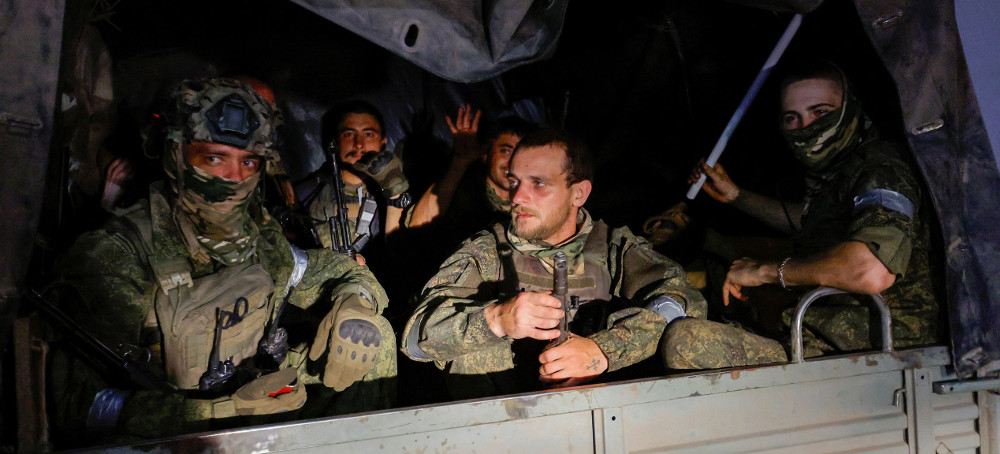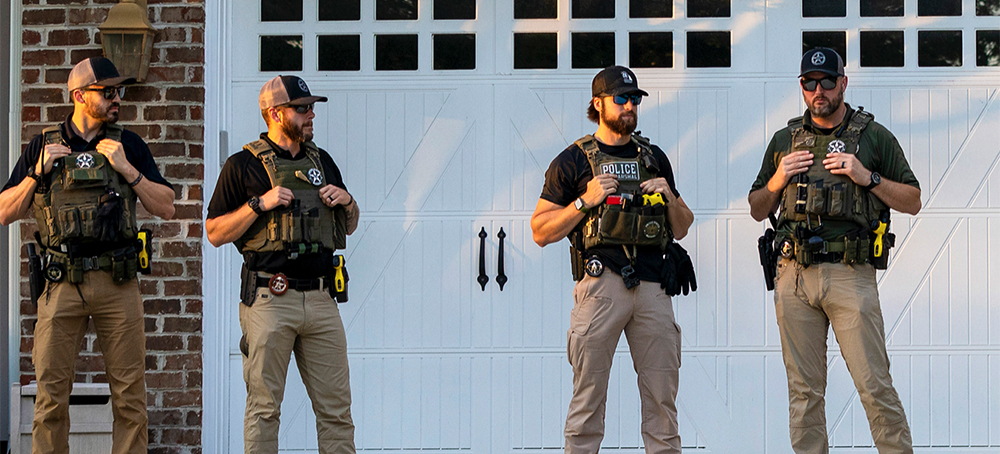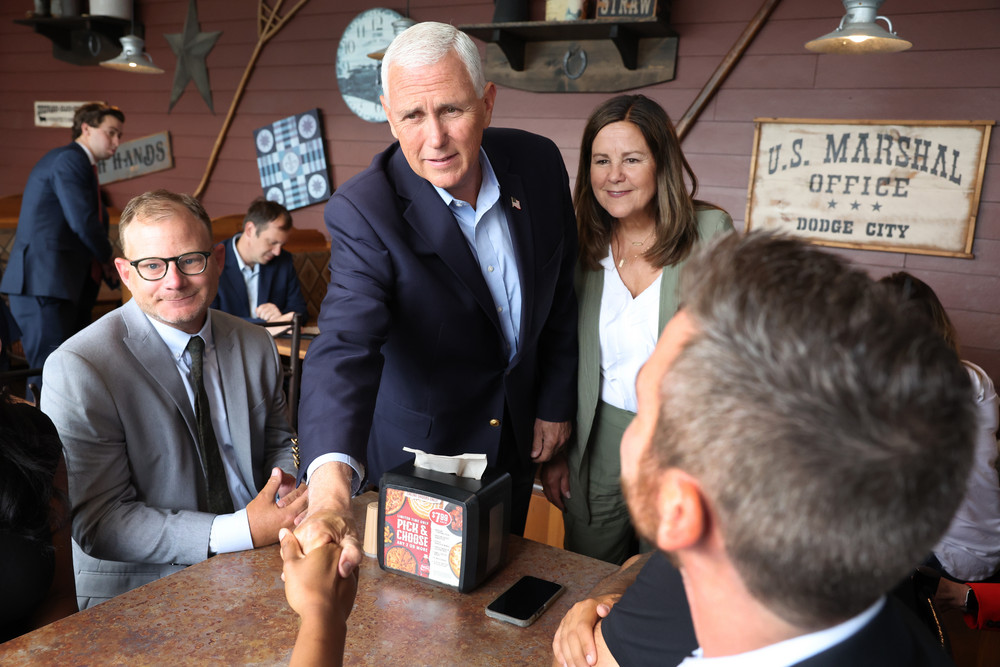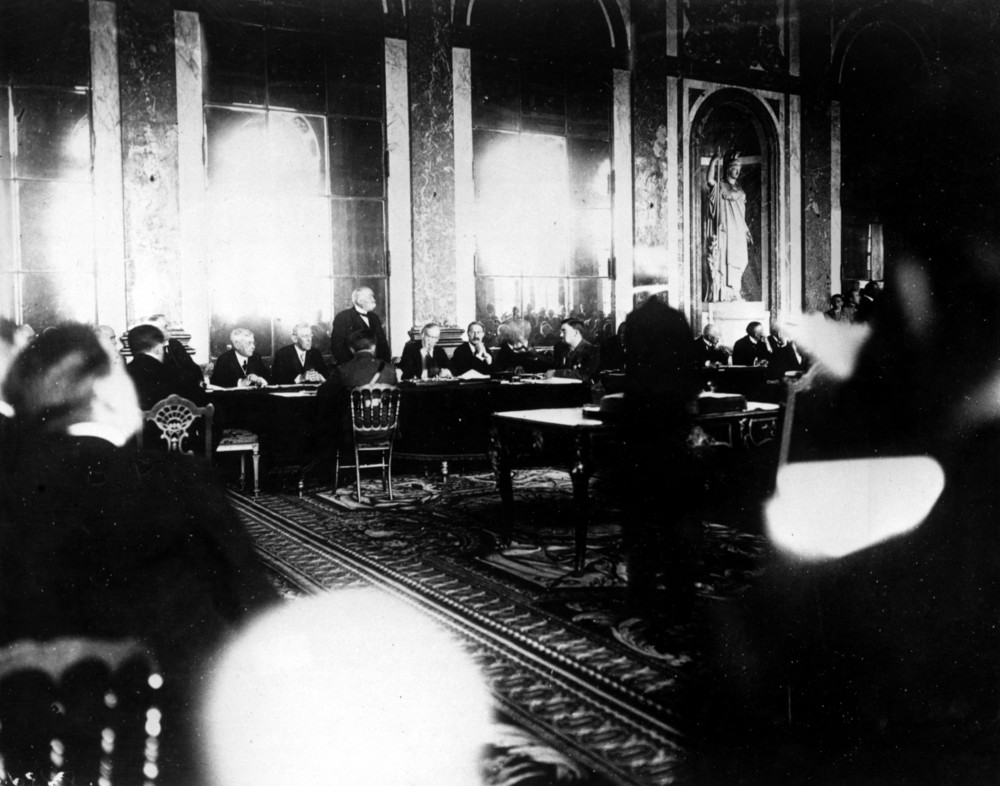
28 June 23
Live on the homepage now!
Reader Supported News
CAN ANYONE DO THE RIGHT THING? — We are in serious financial because we can’t convince 1% of our readers to donate on a monthly basis. That is mind-boggling and incredibly stressful for everyone. Can anyone do the right thing and chip-in. Thanks in advance to anyone who responds.
Marc Ash • Founder, Reader Supported News
Sure, I'll make a donation!

FOCUS: Masha Gessen | Prigozhin Showed Russians That They Might Have a Choice
Masha Gessen, The New Yorker
Gessen writes: "This weekend, the country saw someone other than Putin act politically and—even more important—wield force."
This weekend, the country saw someone other than Putin act politically and—even more important—wield force.
What happened in Russia over the weekend? It began as a mutiny within the armed forces, continued as what looked like a mafia sit-down, seemed briefly to transform into a coup, then ended abruptly the way that a hostage-taking may end, with the terrorist given safe passage, immunity from prosecution, and a bunch of promises.
Stage 1: Mutiny. It had been brewing for months. All through the winter and spring, Yevgeny Prigozhin, whose private army, the Wagner Group, was fighting the Ukrainian military for control of the Ukrainian city of Bakhmut, had been accusing the Russian Defense Ministry of sabotaging his actions and failing to supply enough armaments. Prigozhin and his men—many of them convicted felons conscripted from prison colonies, an approach he didn’t invent but was the first to apply during this war—alternated between being plaintive and menacing. They threatened to abandon Bakhmut. On social media, they hurled insults at military brass, including the Minister of Defense, Sergei Shoigu, and the chief of the general staff, Valery Gerasimov. In response, the Ministry of Defense, Russia’s official, taxpayer-funded Army, which has been fighting alongside Prigozhin’s private force, apparently moved to limit Prigozhin’s power. For months the Ministry of Defense has reportedly been drafting from prison colonies, appropriating Prigozhin’s know-how and presumably cutting off his supply of able-bodied men with nothing to lose. In mid-June, the state military tried to put its house in order by requiring all fighters to sign identical contracts with the Ministry of Defense. It wasn’t clear if the measure applied to the Wagner Group—if it did, Prigozhin could effectively lose control of his army. On June 23rd, Prigozhin accused the Ministry of Defense of striking his bases and, in a series of statements, declared an armed rebellion. “The evil being wrought by the military leadership of this country must be stopped,” he said. “Justice in the ranks of the military will be restored—and then justice for all of Russia.” His men crossed the border from Ukraine into Russia. He claimed that they numbered twenty-five thousand. “This is not a military coup,” he said. “This is a march for justice.”
Prigozhin was not challenging Putin. In fact, he was acting in accordance with the power structure and the mythology constructed by Putin, whereby Putin alone makes all the decisions and, if those decisions are bad, then it’s someone else’s fault—it means that he was misinformed. In a video released on June 23rd, Prigozhin said that war in Ukraine had been unleashed under false pretenses—because, he said, the Ministry of Defense had lied to Putin, making him think that Ukraine and NATO were about to attack Russia. Prigozhin was apparently marching to the capital not to depose Putin but to enlighten him.
Stage 2: The Sit-Down. Prigozhin’s men and their tanks entered Rostov-on-Don, a city of more than a million people and the seat of Russia’s Southern Military District. There Prigozhin talked, over what appeared to be tea, in what appeared to be the courtyard of a military building, with the Deputy Minister of Defense, Yunus-Bek Yevkurov, and a deputy chief of the general staff, Vladimir Alekseyev. The genesis of the meeting was unclear. Had the two generals flown in to speak with Prigozhin? If so, this was a negotiation. Were they in Rostov when Prigozhin’s men occupied the city? That would make them more like hostages and less like negotiators. Prigozhin sat, manspreading, on a narrow bench, his Kalashnikov dangling against his right knee as he used both hands to gesticulate. “We want the chief of the general staff and Shoigu,” he said. “Until they are handed over to us, we will stay here and blockade the city.”
“Take them,” Alekseyev said, smiling and spreading his arms wide, as though waving Shoigu and Gerasimov away. He seemed to have as little regard for Shoigu as did Prigozhin. This is not surprising. Shoigu did not come up through the ranks of the military. In the Soviet Union, he was a Party functionary. In post-Soviet Russia, he became the Minister of Emergency Situations. What primarily qualified him for the job of Minister of Defense, which he has occupied since 2012, was a sort of adventurous friendship with Putin: the two camped together and hiked together and ran the Russian Geographic Society together, Shoigu as president and Putin as chairman of the board.
Stage 3: The Coup. Prigozhin’s men began their march toward Moscow. Along the way—perhaps even before entering Rostov—the Wagner Group shot down some number of Russian military aircraft. Now Prigozhin’s mutiny was looking like a coup—not because Prigozhin was challenging Putin directly but because he was fighting Putin’s actual Army. In the morning on the second day of Prigozhin’s insurgency, Putin addressed the nation. He compared the “armed rebellion,” as he called it, to the revolutions of 1917, which, he claimed, cost Russia its victory in the First World War and caused it to lose vast territories. He did not name Prigozhin, referring, rather, to “organizers of the armed rebellion,” whom he called traitors. He vowed to punish them, and to defend Russia.
Several Russian regions declared states of emergency or introduced various restrictions. The mayor of Moscow gave the city a day off on Monday. (It was still only Saturday at this point.) The Russian capital prepared for battle. Putin’s plane left Moscow and disappeared from the radar. Prigozhin had to face that, rather than speak to Putin, he would likely die when he attempted to enter Moscow—because, whatever he had intended, he had ended up attempting a coup.
Stage 4: It Ends the Way a Hostage-Taking Might. On Saturday evening, about thirty-six hours after the mutiny began, the Belarusian dictator Alexander Lukashenka’s press service announced that he had negotiated an end to the crisis. Prigozhin’s people would reverse course. Prigozhin would go to Belarus. Putin’s press secretary, Dmitry Peskov, said that all criminal cases against Prigozhin had been closed. Lukashenka’s press statement said that the agreement was mutually beneficial.
Rumors swirled that Lukasheka, empowered by Putin, had promised Prigozhin Shoigu’s head on a platter. There is no way to know if this is true, or if Putin had any intention to keep whatever promises Lukashenka doled out, but one of several impossible dilemmas that Putin is facing now is, indeed, what to do with Shoigu. He can hardly afford to keep a Defense Minister who allowed all of this to happen—the public spats, the mutiny, the siege of what is arguably the country’s most important military city, the apparent failure to stop Prigozhin’s armored column, and, most of all, the disrespect evident during Prigozhin’s sit-down with the military brass. On June 26th, Prigozhin issued a ten-minute audio statement on the mutiny. He stressed that his troops were able to incapacitate all Defense Ministry troops along the route of the “march for justice.” He added that in twenty-four hours, the Wagner Group covered the equivalent of the distance from Ukraine’s eastern border to its western one, saying, “If the Special Military Operation had been undertaken by troops as well trained and disciplined, it could have lasted a day.”
Putin may be similarly stuck on the issue of Prigozhin himself. The Wagner Group may or may not be essential to the Russian effort in Ukraine, especially during the ongoing Ukrainian counter-offensive. But, even if Putin doesn’t need Prigozhin on the battlefield, he must decide what to do about him. The conceit that Prigozhin is going into exile in Belarus is absurd, mostly because this wouldn’t be exile. With charges against Prigozhin dropped, he is functionally free to return to Russia (in contrast to anti-Putin activists and independent journalists, many of whom are forced to stay in exile for fear of being arrested in Russia). Belarus, the junior member of the Russian-Belarusian “Union State,” is not exactly a sovereign state. The border between the two countries is functionally open. Lukashenka depends on Putin to help in his continuous crackdowns to prop up the Belarusian regime. Lukashenka was once fickle, playing Russia against Western European countries, but, ever since Putin helped Lukashenka put down pro-democracy protests in 2020, Lukashenka has stayed in line. Having the head of a large private army live in Belarus should seem to Putin like an extremely risky proposition. What if Lukashenka replaces Putin’s muscle with Prigozhin’s?
Historically, among Russian élites, Putin has followed the rule to keep your friends close and your enemies closer. No one leaves this mafia family intact. Putin has the option, and perhaps the instinct, to bring Prigozhin back into the fold (and out of Belarus). That should be easy, since Prigozhin never actually wanted to leave the fold. In his June 26th statement, Prigozhin reiterated that he had no desire to bring down the government. Putin addressed the nation later that day, promising to deal decisively with those who inspired the mutiny that threatened the country. But he chose to frame the rebellion as a kind of terrorist attack, blaming it on neo-Nazis in Kyiv and unnamed enemies in the West, vowing never to cave in to blackmail, and praising Russian national unity. He did not mention Prigozhin by name and, indeed, praised Wagner fighters as brave patriots, and invited them to join the regular Ministry of Defense forces. This invitation back into Putin’s good graces does not necessarily exclude Prigozhin himself. A return to Putin’s circle would probably require Prigozhin to appear on television and express contrition for going a bit overboard in his conflict with Shoigu. Absurd as this prospect may seem, what with the siege of Rostov and the destroyed aircraft and their dead pilots, it falls within the bounds of the imaginable for Russian propaganda.
What would the Russian people think of this? In general, the Putin regime, like all totalitarian regimes, aims to prevent people from thinking. But this past weekend Russians—not just the Russians who consume independent media but all Russians who watch any TV or read or watch anything online—saw something extraordinary. They saw real political conflict. They saw someone other than Putin act politically and—even more important—wield force. Can all the propagandists and censors make them unsee it? They will try. Russians should probably gear up for an extreme information crackdown.
Will Russians then forget what happened? Some things that shocked Western observers, such as Prigozhin’s statement that the war in Ukraine was started under false pretenses, will probably easily vanish from consciousness. The specifics of what he said matter little. What’s important is that he tapped into a reservoir of bitter suspicion: Russians always suspect that they are being lied to, yet they have no choice but to support those who lie to them. Prigozhin gave them a choice, by driving tanks through the streets of Rostov.
If Putin’s regime ends before Putin dies, that end will look much like the events of this past weekend: sudden, bloody, and ridiculous at first. Most coups seem absurd at the beginning. Every coup is a confidence game. The ultimate question is: How many people will believe that Person A, not Person B, has power? Prigozhin’s gambit wasn’t intended as a coup, but it functioned as one. Regular military forces didn’t stop him, and indeed the defense officials negotiated with him, because they apparently believed that he had power. Not the power to bring down Putin but the power to influence Putin. They were not wrong. Putin greeted the mutiny by calling Prigozhin a traitor and accusing him of sticking a knife in his back, and ended the coup by absolving Prigozhin of charges.
Even though, in the short term, it may look as if Putin survived Prigozhin’s accidental coup attempt, something has changed in Russia. One of the most intriguing scenes of the wild weekend was Prigozhin’s troops’ departure from Rostov. People applauded and thanked them. For what? For voicing their resentments. In the American imagination, these are specific, possible to verbalize. In the Russian reality, they are felt more than spoken (as, indeed, they are here)—they require someone to come along and give voice to them (as, for example, Donald Trump does for millions in the U.S.). Prigozhin did that. He even broadcast his conversation with the Deputy Minister of Defense and the deputy chief of the general staff. This was the first unscripted top-level political conversation that Russians had seen in years. It sounded like two thugs haggling over the terms of their protection racket, but it was a negotiation —it was politics—and it was possibility. Most Russians I know wouldn’t want to live in the country that this exchange portended, but it’s different from the one they live in now.
READ MORE
Contribute to RSN
Follow us on facebook and twitter!
Update My Monthly Donation
PO Box 2043 / Citrus Heights, CA 95611










